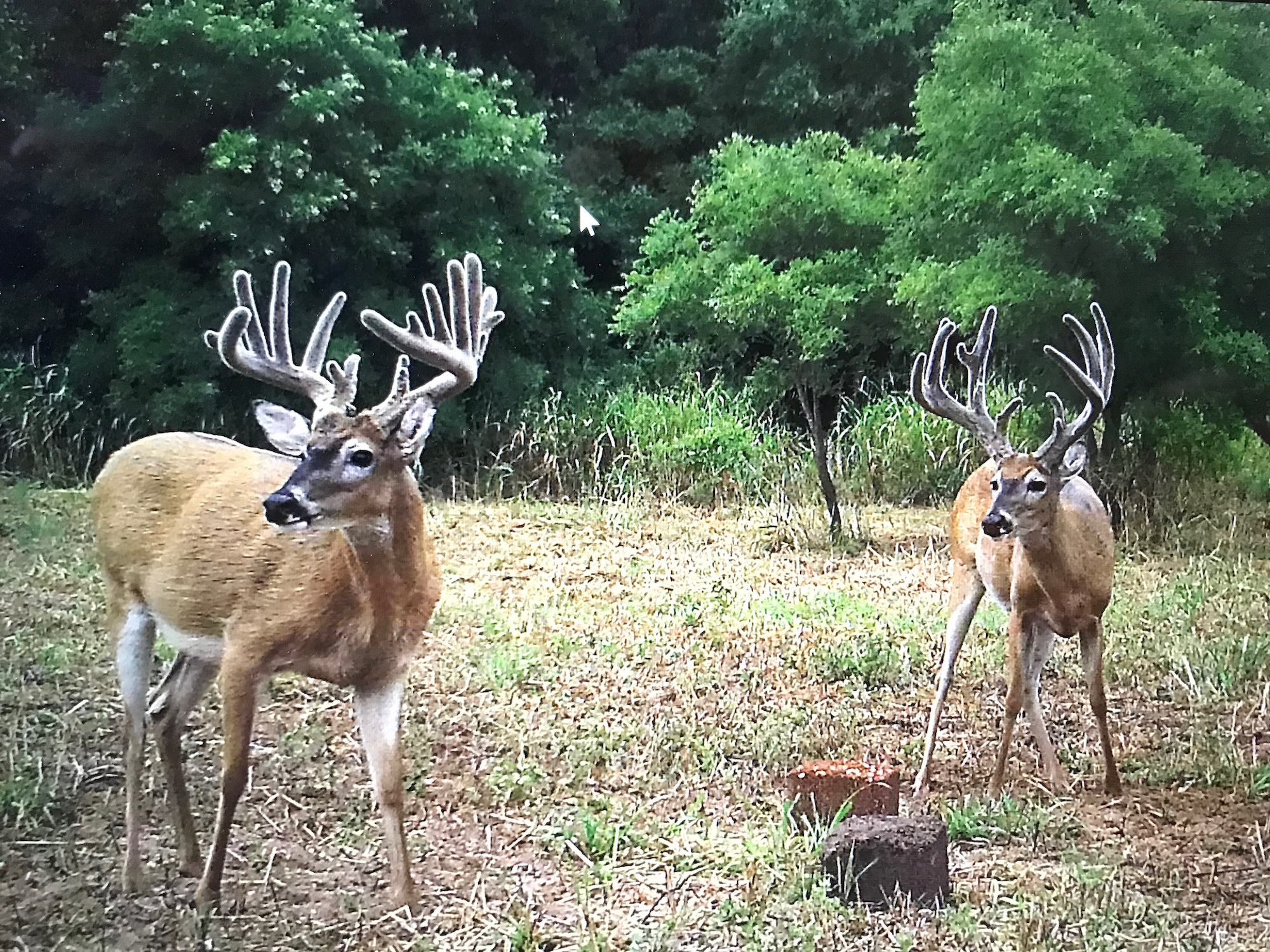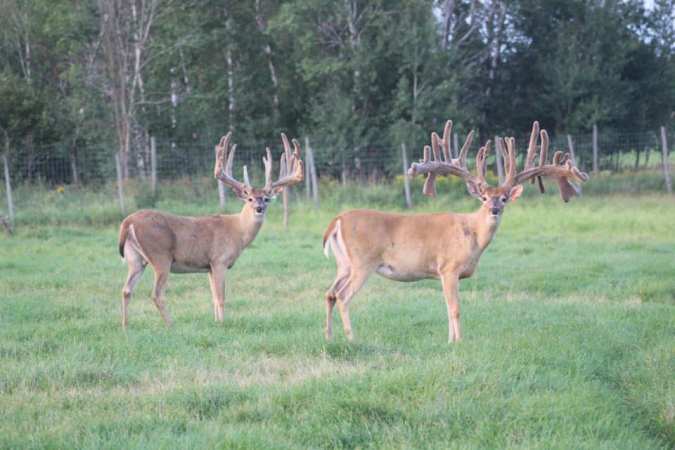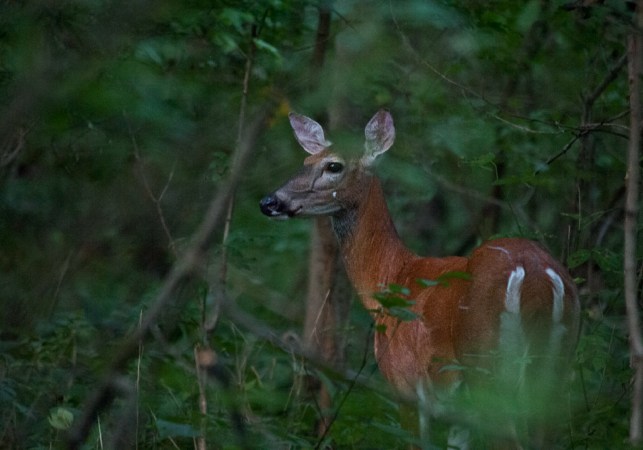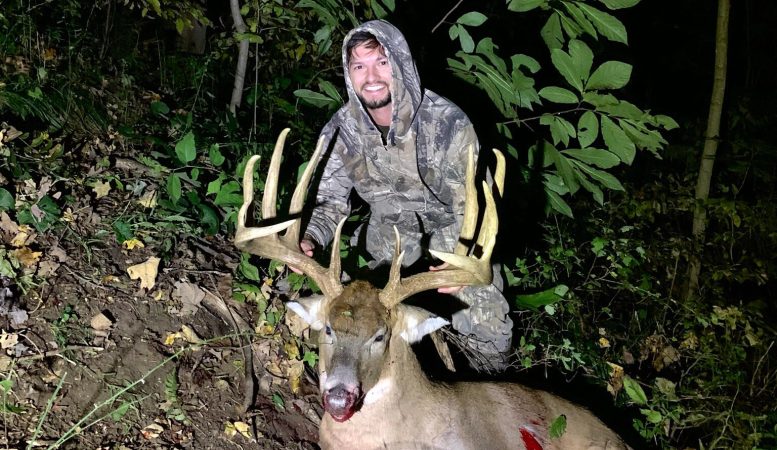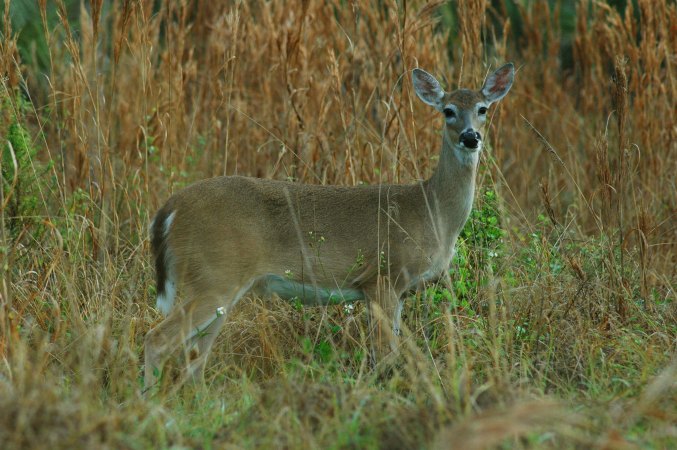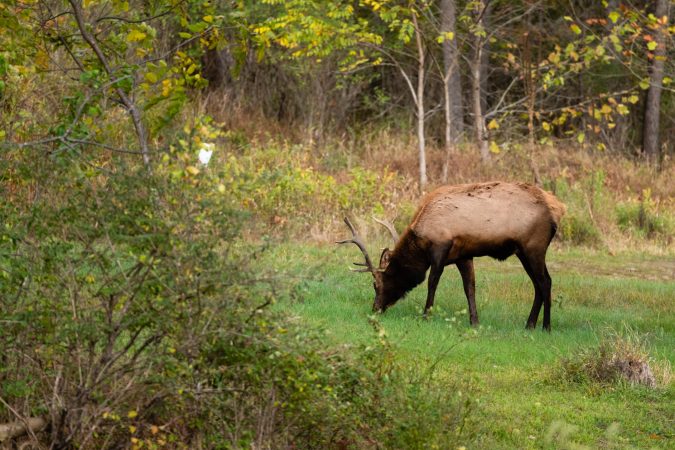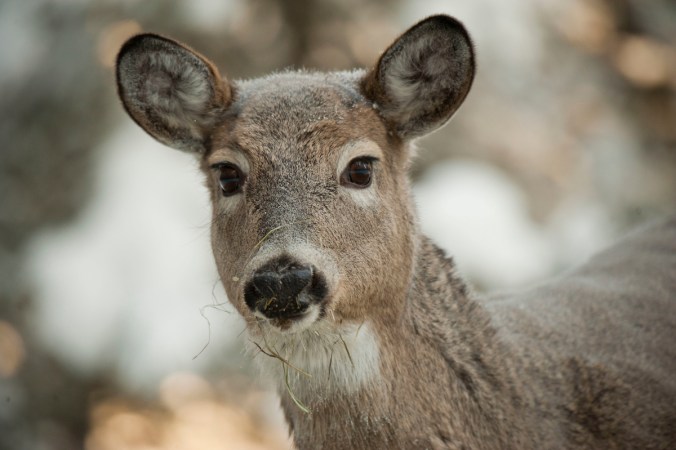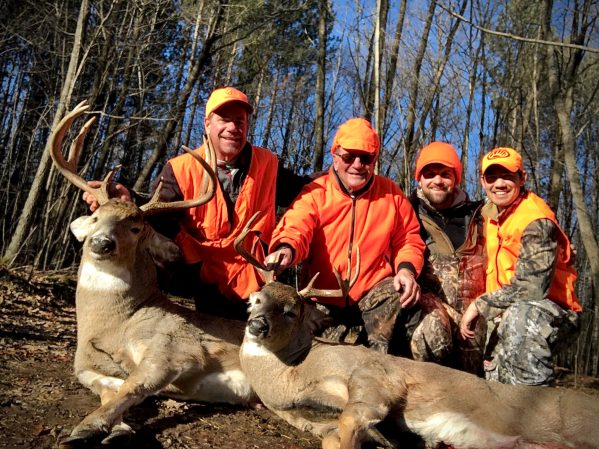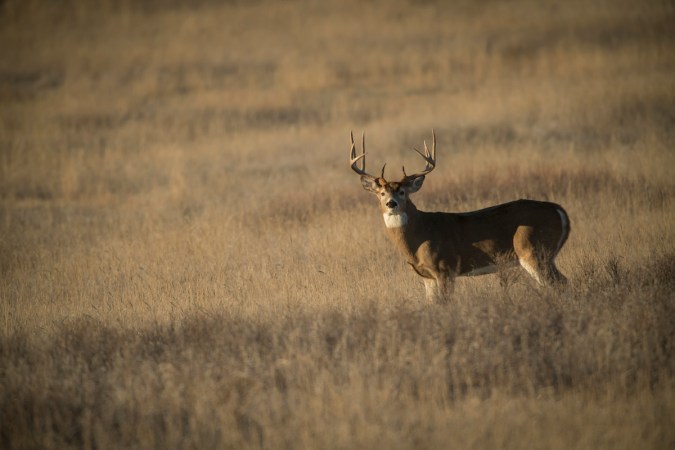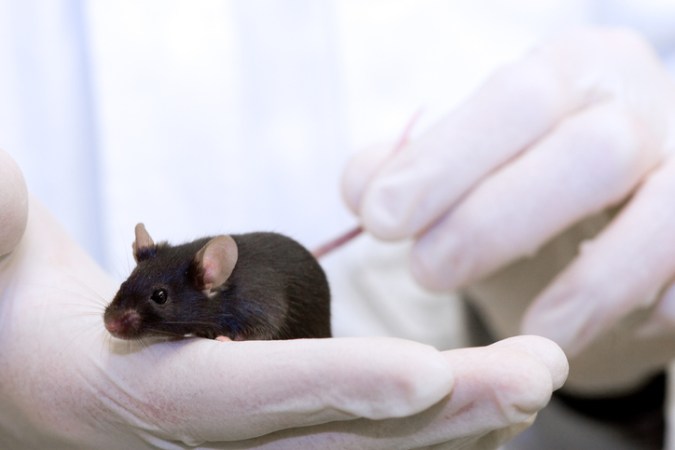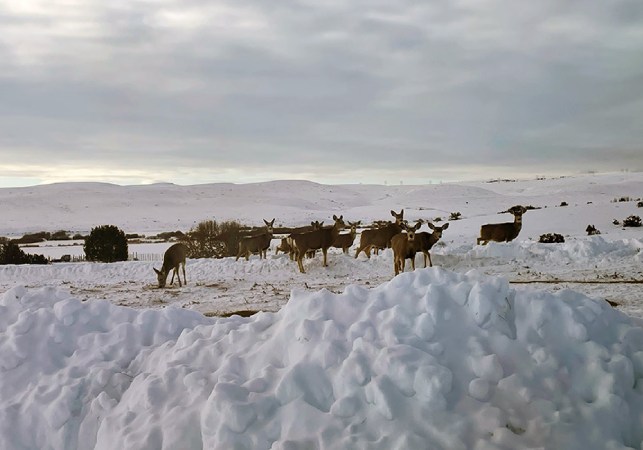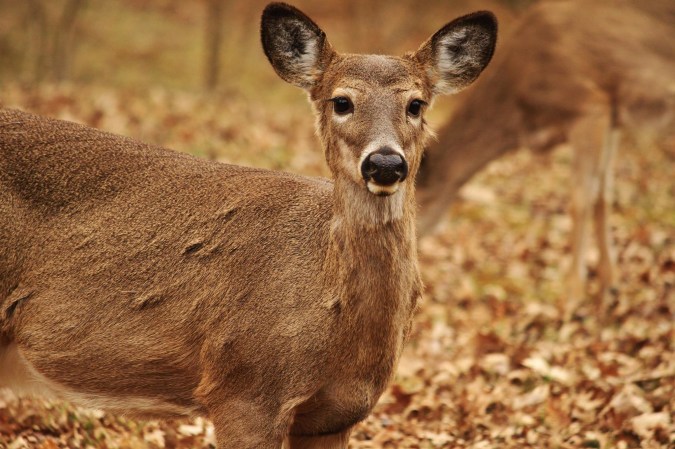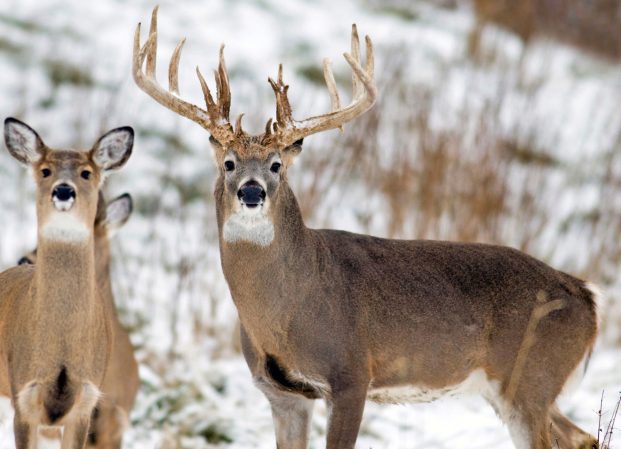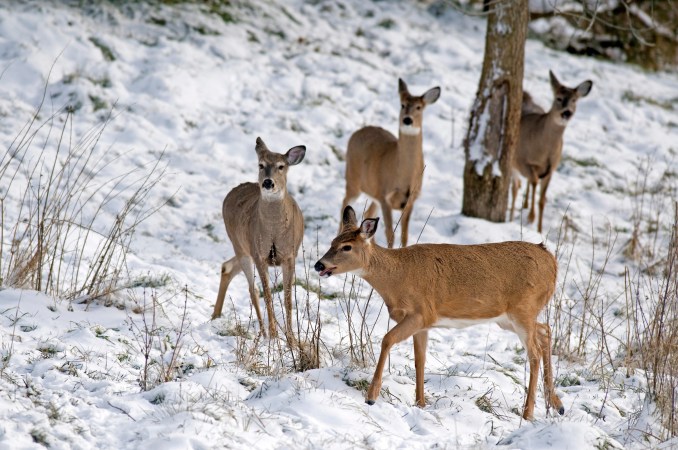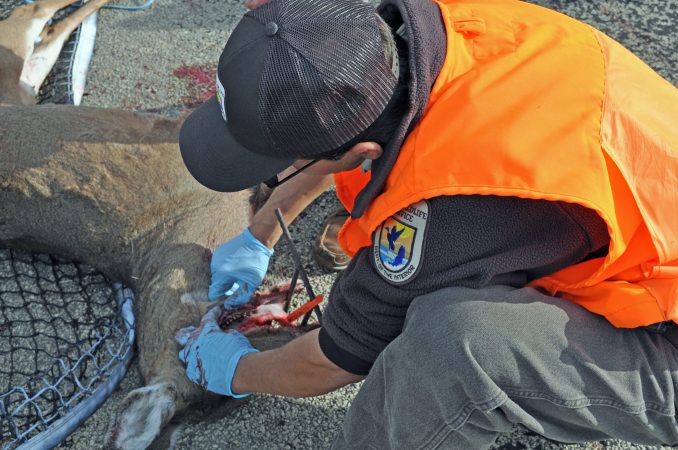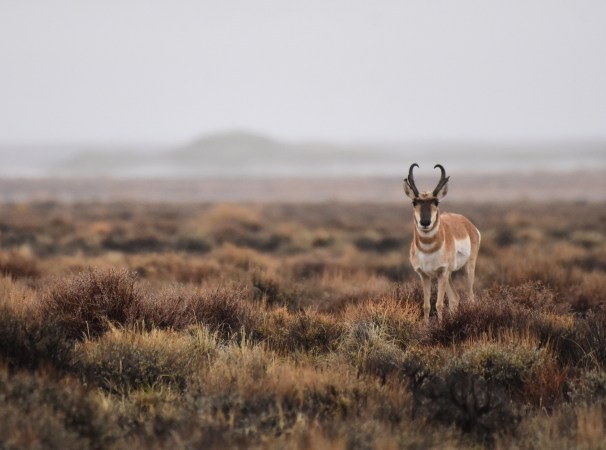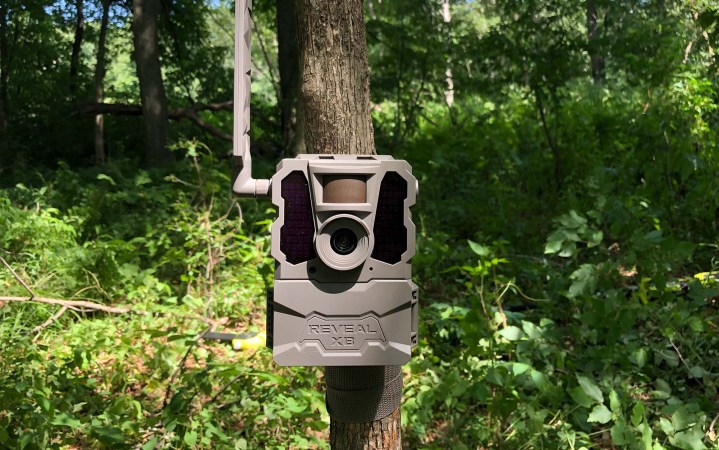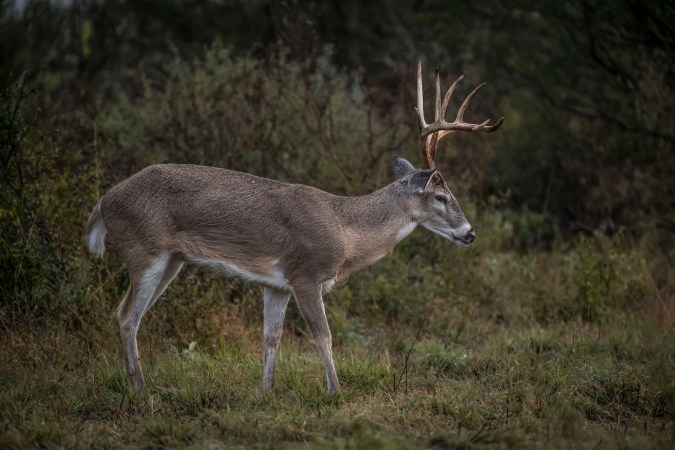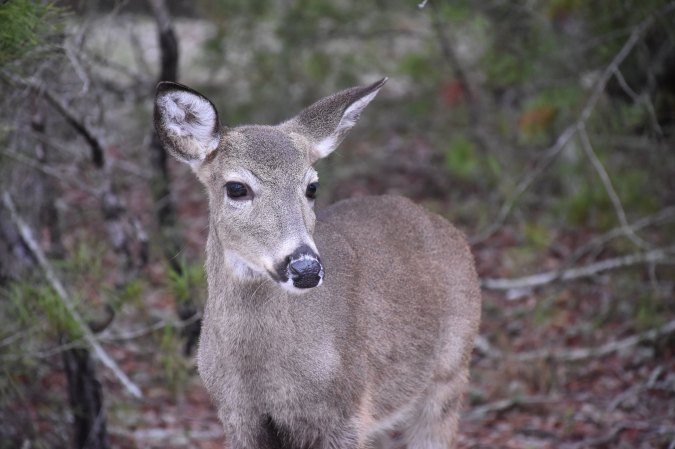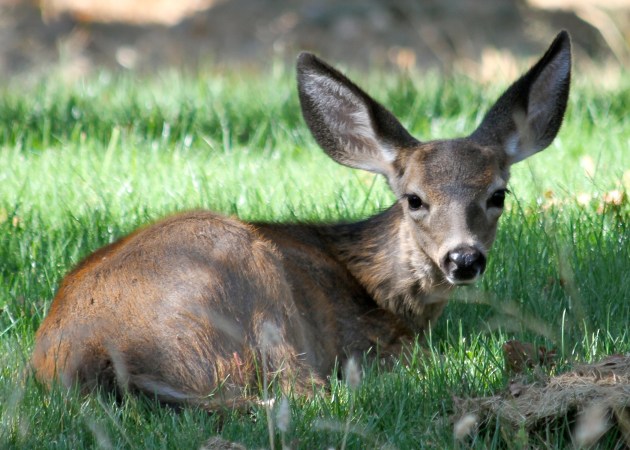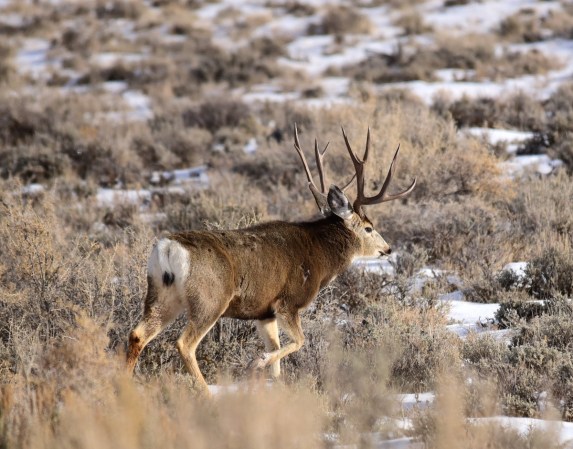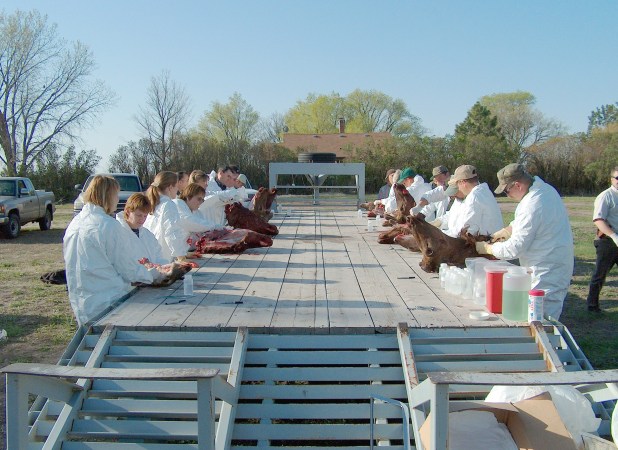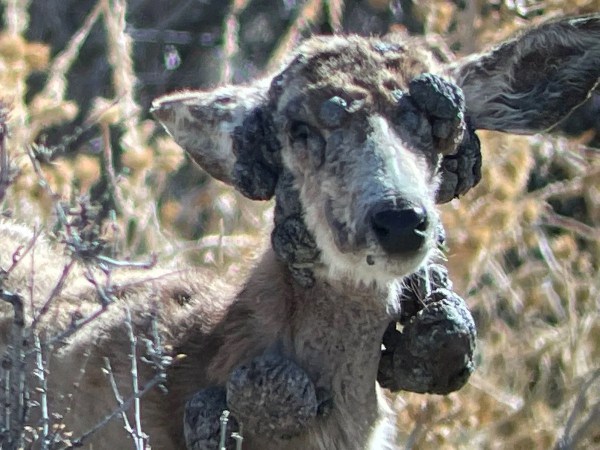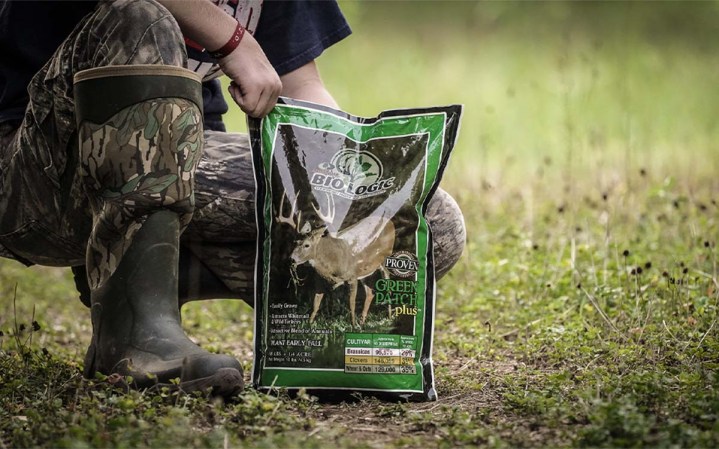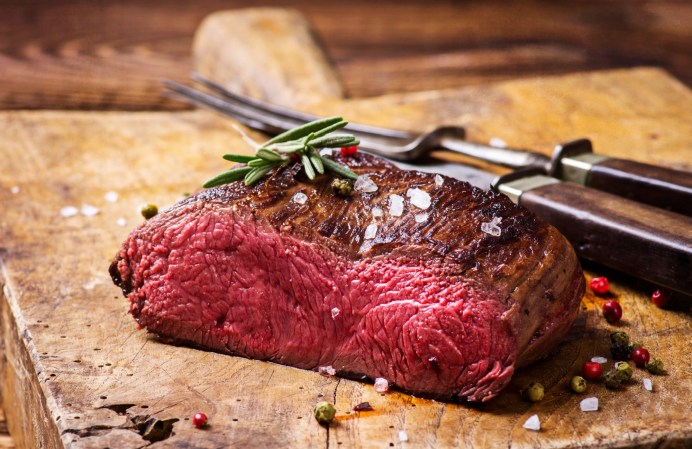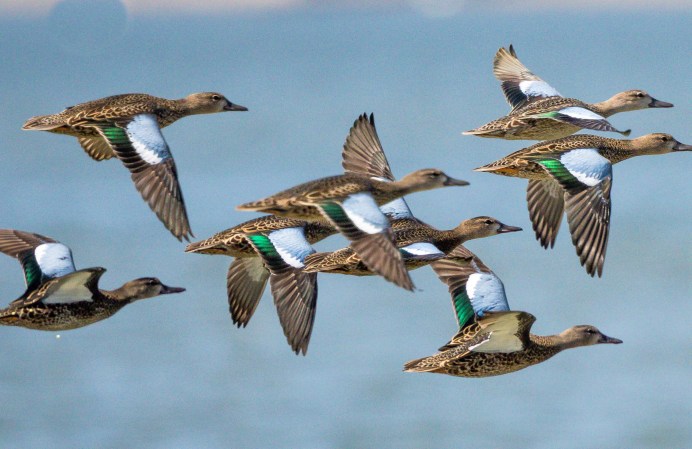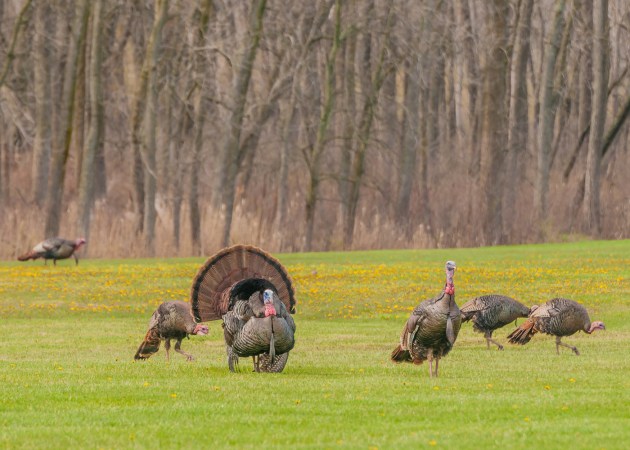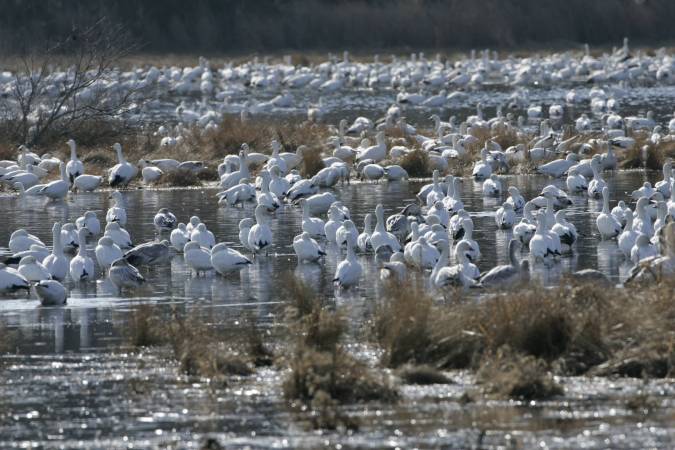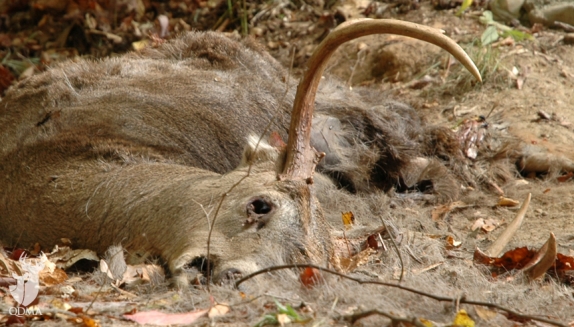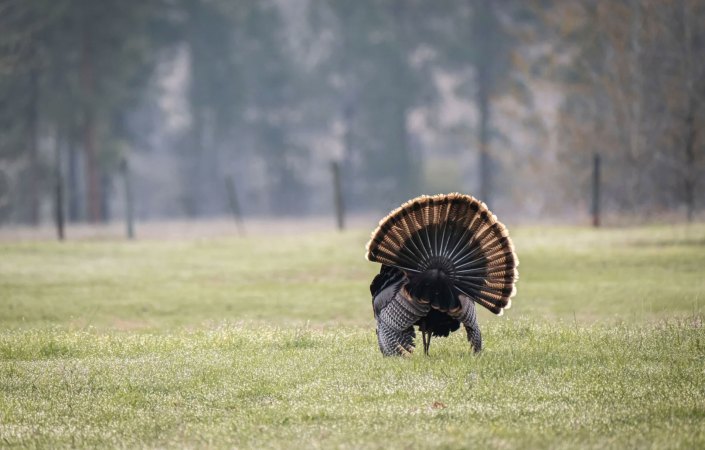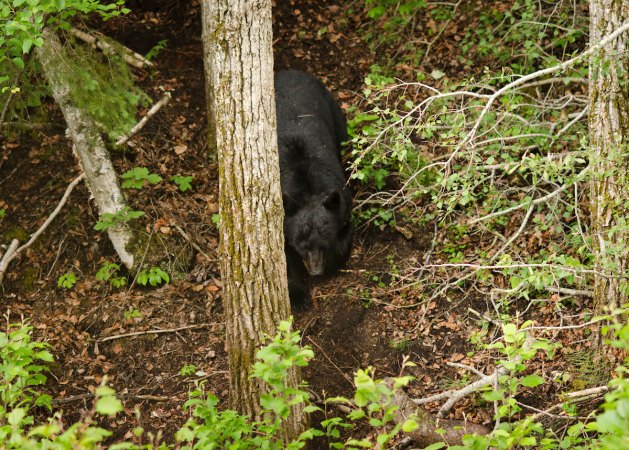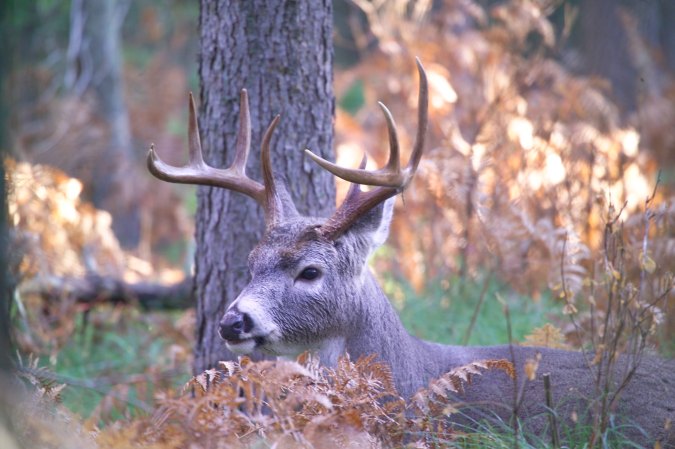A debate involving corn piles and shed prions is brewing in Kansas, where last month state wildlife officials alluded to a potential ban on baiting for deer. In a news release issued by the Kansas Department of Wildlife and Parks on July 3, the agency said it had “taken the first steps in what will be a multi-year exploration of issues surrounding baiting wildlife.” They cited growing concerns about the potential connection between baiting deer and the continued spread of chronic wasting disease.
By the end of the month, many hunters there had interpreted KDWP’s cautiously-worded announcement as the first step toward a statewide bait ban. Kansas already prohibits the use of bait on public land, so any future ban would affect private lands, which comprise roughly 98 percent of the state. Some deer hunters are unhappy about the potential restriction.
“They are looking to take away baiting rights in Kansas,” hunting personality Travis “T-Bone” Turner wrote in an Instagram post, which included the phone numbers of several members of the Kansas Wildlife and Parks Commission. “Whether you’re a resident or nonresident, that affects us all—not to mention all the residents who are not hunters but make a living off selling corn and bait.”
Turner’s call to action drew responses from hundreds of hunters in Kansas and beyond. Some voiced their support of a bait ban. Others attacked it. The back-and-forth that followed was a familiar re-hashing of the same debate that has played out across multiple states in recent years:
Is there a real connection between the use of bait and the spread of CWD? And, are hunters willing to give up their corn piles and mineral blocks? Even if they’re not, will the state force them to quit baiting anyway?
CWD in Kansas
The state’s concerns come amid the increase of CWD cases in Kansas’ wild deer herd. Since the disease was first detected in 2001, it’s been detected in 738 cervids—all but three of which were free-ranging whitetails. The number of positive detections recorded annually has also been creeping upward, and a map of CWD in the state shows a noticeable uptick starting in 2014.
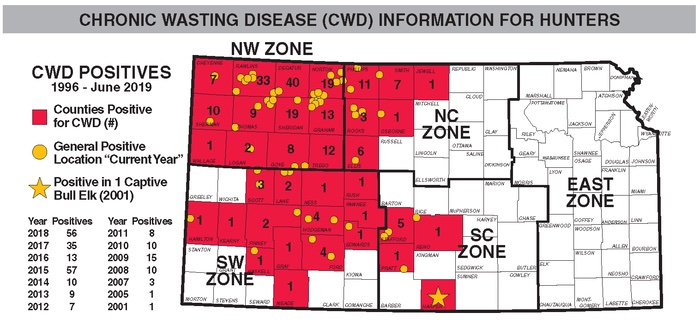
Kansas, of course, isn’t the only state in the region grappling with CWD. And as different state agencies have tried to mitigate its spread, they’ve enacted a range of regulation changes aimed at both deer breeders and everyday hunters. This includes different levels of mandatory testing, the establishment of CWD checkpoints and containment zones, and bans on the movement of deer parts—all of which can help slow the disease’s spread. Bait bans are just one of the strategies used to fight CWD. According to the National Deer Association, five CWD-positive states have banned deer baiting over the last five years.
The logic behind a baiting ban is that corn piles, mineral blocks, and other forms of bait concentrate deer in a very specific area. Because CWD is known to spread through the exchange of saliva and other bodily fluids, it makes sense that these concentrations of deer are at a higher risk of contracting CWD.
“Baiting and feeding deer tend to concentrate deer at small points on the landscape, often with the trails leading to the feeding sites resembling the wheel spokes of a bicycle,” KDWP notes on its website. “Anytime animals are concentrated at this type of ‘hub,’ the likelihood of disease transmission increases in a herd.”
What Does the Science Say?
The use of bait has always been a divisive subject in deer hunting circles. There are important ethical and cultural sides to the debate, especially in Midwestern and Southern states where baiting deer has long been the norm.
Hunters who support baiting will often point to food plots and cattle tanks where deer often congregate in agricultural areas. How are those food and water sources much different than baiting?
As NDA’s Kip Adams pointed out in a recent article, food plots are different than baiting because they still allow deer to spread out while they’re feeding. After deer browse plants in a specific area, they move to a different spot in the plot. Plus, there are several peer-reviewed studies that have looked at the effects of bait on cervid populations, and more specifically, how the use of bait contributes to the spread of other diseases such as mange and brucellosis. (Read Adams’ full article here to get an in-depth perspective on the connection between the use of bait and the spread of CWD.)
“Feeding can lead to increased potential for disease transmission either directly (via direct animal contact) or indirectly (via feed functioning as fomite, spreading disease into the adjacent environment and to other animals,)” researchers concluded in one such study from 2014. “We identified numerous diseases that currently pose a significant concern to the health of individuals and species of large wild mammals across North America, the spread of which are either clearly facilitated by the application of supplemental feeding or baiting.”
Read Next: In the War Against CWD, Deer Breeders in Texas Are Being Cast as Both the Enemy and the Answer
There’s plenty of research specific to baiting and the spread of CWD as well. According to Adams’ article:
“Researchers have documented prion concentrations at bait sites in CWD-infected areas, and they’ve determined CWD is both contagious and self-sustaining in a deer herd. The potential for transmission from the environment depends on contamination levels and the resistance of prions to breakdown.
Unfortunately, according to Cornell University’s Dr. Krysten Schuler, CWD prions have been shown to remain infectious in the environment for at least two years. According to Colorado Parks and Wildlife Department’s Dr. Mike Miller, this greatly increases the disease transmission potential at bait/feed sites where saliva, urine and feces are deposited at levels much greater than other areas throughout an animal’s home range.”
It’s too soon to tell how Kansas hunters and the state agency will come to terms with the science, culture, and opinions around deer baiting in the state. KDWP says that for now, no official regulation changes have been proposed, but that the agency will make baiting deer a regular discussion item at future Commission meetings. The next public meeting is scheduled for August 17 in Kansas City.

